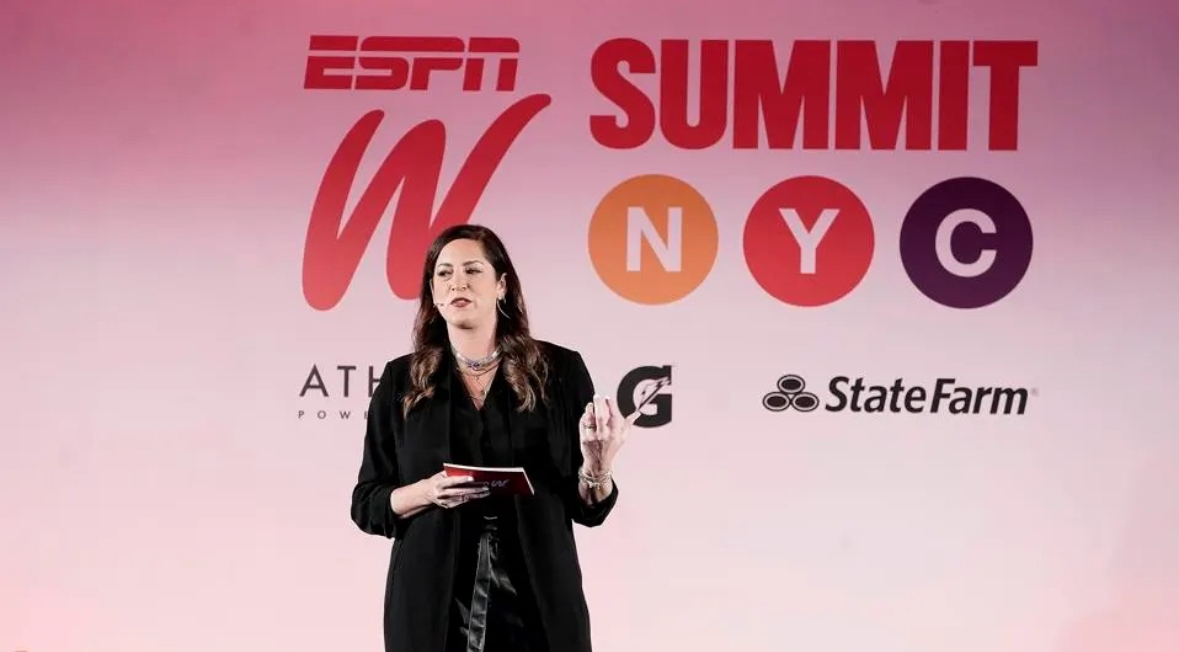.jpeg.aspx)
GETTY IMAGES
On the heels of unprecedented viewership of the NCAA Women's Basketball Tournamentdriven by Caitlin Clark fandom, the ESPNW Summit, Thursday, discussed ways to sustain the growing interest in women's sports.
Sarah Spain kicked off the summit by presenting key figures on viewership and attendance, showcasing the significant momentum and growth experienced by women's sports during the 2023-24 seasons. While enthusiasm runs high, discussions emphasized the importance of sustaining this growth beyond the Caitlin Clark Effect.
Looking back, women's sports has seen surges before, notably during the WNBA's early years with impressive attendance figures. However, these highs eventually tapered off, hitting record lows in recent years, underscoring the need for continuous innovation, promotion, and investment to secure the future of women's sports leagues and teams.
“Keeping The Foot On The Gas”
Jess Smith, President of the WNBA's Golden State team, emphasized the need for women's sports stakeholders to maintain momentum by "keeping their foot on the gas." Throughout the summit, it became evident that leaders in women's sports are determined to be better prepared this time and aim to leverage phenomena like the “Caitlin Clark Effect.” Discussions revolved around exciting new trends and goals for sustained growth in the future, highlighting the increased overall investment in women's sports and the recognition that sustained growth requires ongoing investment. Crucially, women's sports are now a significant industry and a lucrative business opportunity. This recognition is a vital step in cementing the legitimacy and value of women athletes, teams, and leagues, positioning them not only as strong individual brands, but also as reliable investment opportunities.
Name, Image, And Likeness (NIL)
A significant aspect of this shifting landscape is the recent changes in name, image, and likeness (NIL) policy across amateur athletics. Coaches, who may have previously opposed the notion of their student-athletes earning money while competing in collegiate sports, are now embracing this reality, including national championship coaches, and members of the summit’s opening panel, FSU’s Brian Pensky (women’s soccer) and UNC’s Erin Matson (Field Hockey). This opening panel reflected a general recognition that these NIL changes present a substantial opportunity and greater equity for women student-athletes. Unlike their men counterparts, women student-athletes often have fewer professional playing opportunities, but NIL changes enhance their earning potential across all sports during a highly visible time in their playing careers.
Media And Social Media
Women athletes continue to excel in the social media sphere, capitalizing on their exposure to enhance their earning potential and brands. On average, women athletes receive roughly 8 times more engagement per post compared to their men counterparts. In addition to the high engagement observed in women's basketball across the 2023-24 season, college softball athletes garner nearly 10 times more engagement on social media than their men’s baseball counterparts, with their average engagement per post typically five times higher.
Importantly, linear and streaming television platforms are beginning to embrace these trends, providing additional opportunities for fans and new consumers to watch and engage with women's sporting events. Moreover, they are incorporating new talent into their reporting and coverage of women's events. At the ESPNW summit, Ali Krieger expressed her excitement about joining ESPN to lead their coverage of women's soccer, while League One Volleyball announced a partnership with ESPN to broadcast some of their inaugural professional season matches starting in January 2025. These collaborations and hiring decisions indicate a promising outlook for growth and investment across sports beyond women's basketball.
Everyone Watches Women’s Sport
The prevailing sentiment echoed throughout the summit discussions was the acknowledgment that women's sports have a wide audience, and there's no longer a need for women athletes, fans, and stakeholders to continually prove this fact. Lindsay Kagawa Colas, the keynote summit speaker and Executive Vice President of Talent at Wasserman, highlighted the ongoing struggle for women athletes and practitioners in women's sports to demonstrate the industry's success, contrasting it with the longstanding acceptance and investment in men's sports.
Women athletes are growing weary of the perpetual need to justify and defend their value, and the accumulating data is gradually chipping away at the need for this additional effort. Throughout the summit, the message remained consistent regarding the surge of new fans and consumers: there's space for everyone. As Colas emphasized, the bandwagon is expansive and continues to expand at an exciting clip, and it is important to be welcoming of every new individual, organization, and investor interested in becoming lifelong supporters. Undoubtedly, the tides across women’s sports are changing, and the ESPNW summit highlighted this historic time of growth.